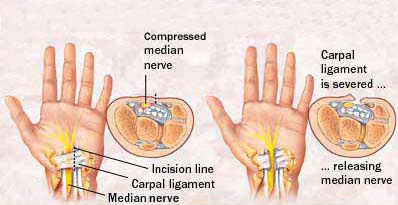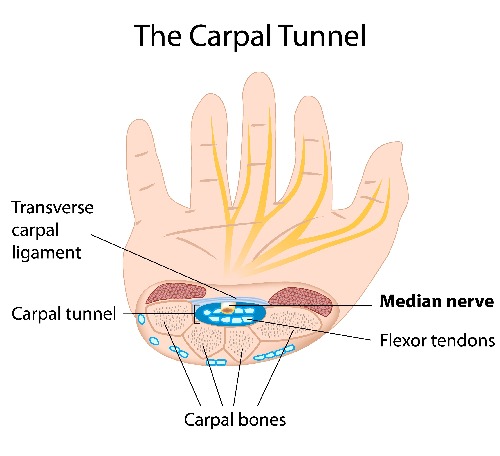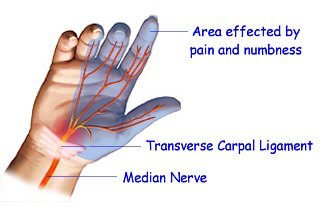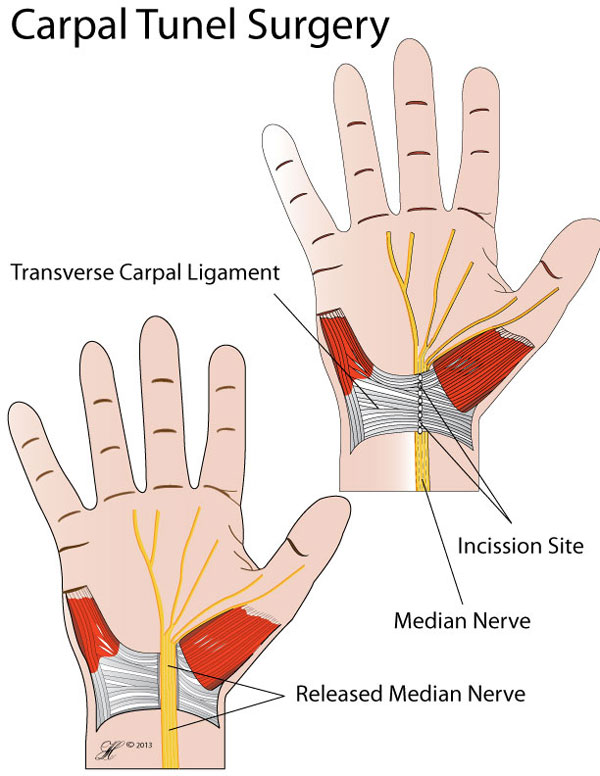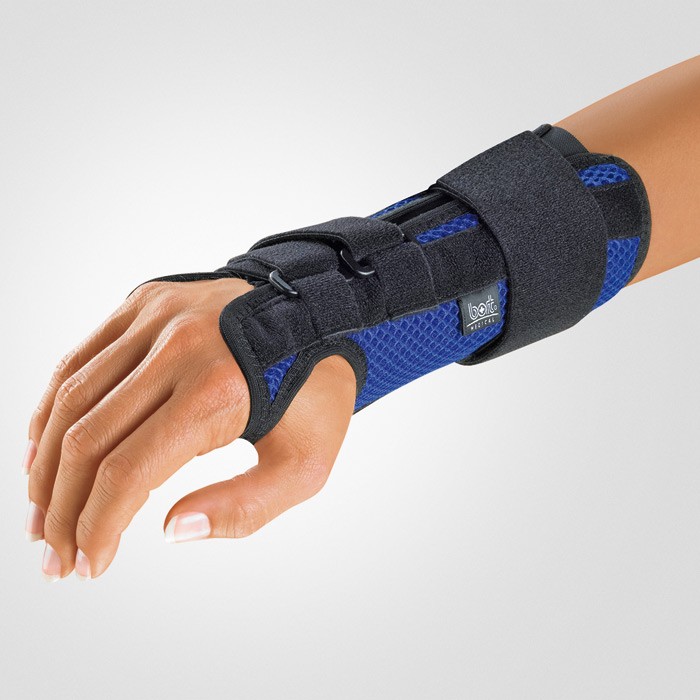Carpal tunnel syndrome is a common condition, affecting the hand and fingers. Those with carpal tunnel can experience a range of symptoms to varying degrees of severity, however usually it causes pins and needles or numbness in the fingers and hand. It can also result in pain, weakness and a lack of coordination, noticeable when using the hand for everyday activities.
These problems are caused by pressure on the median nerve which runs through the wrist at the carpal tunnel. The median nerve controls movement and feeling of your thumb and all fingers except for your little finger. For some, symptoms can cause significant discomfort and functional limitation, resulting in time off work and an inability to engage in sport and leisure activities.
Tasks like driving and gripping onto your phone can be painful and difficult. Often a period of time wearing a wrist brace is recommended to support the wrist and to prevent strain on the carpal tunnel. For some, this can reduce or resolve symptoms. However, when symptoms are severe and persistent often carpal tunnel release surgery is required. Carpal tunnel release surgery is a procedure done under local or general anaesthetic. The surgeon makes an incision at the wrist or base of the palm and cuts the ligament that acts as the roof of the carpal tunnel. This is done to reduce or alleviate the pressure on the nerve. The body’s natural healing process will lay down scar tissue which will rejoin the ends of the ligament. More space is left for the nerve in order to prevent ongoing issues. Your wound will be sutured once the operation is complete and the wound healing process begins.
So what should you do once you have had your surgery done??
Hand Therapy is very beneficial following carpal tunnel release in order to provide you with information regarding wound healing and the rehabilitation process. While some surgeons will refer you for hand therapy, it is important to know that you don’t need a referral in order to be seen following your surgery.
Depending on your surgeon’s wishes, sometimes it is recommended to wear a wrist brace for a couple of weeks to allow the tissues to heal. This is often worn during the day and night but taken off intermittently to gently exercise the wrist in order to maintain good movement. Managing any swelling immediately following surgery is a priority as persistent swelling can slow down healing.
Compression bandages or wraps can help with reducing swelling quickly. It is very important also to move the fingers and thumb straight after your operation to ensure all the tendons that bend the fingers are moving and gliding well. Once your stitches have been removed then it is important to start some gentle massage of the scar to prevent hard, raised scars that can cause stiffness in the wrist and fingers.
Monitoring your sensation and providing you with tasks to encourage getting the feeling back in your fingers faster is also covered in your hand therapy program. Please keep in mind that everyone responds differently to surgery and therefore recovery times can vary. It is recommended that you gradually return to functional use of your hand and fingers over the 4 weeks following your surgery. Return to work at this time is usually appropriate.
It is, however, it is strongly recommended that you avoid heavy lifting, strong gripping, vibration and repetitive use of your hands and wrists until at least 6 weeks post surgery to allow structures to properly heal. Complications experienced following carpal tunnel release surgery are not common, however, some people do experience ongoing pins and needles for extended periods and persistent tenderness or swelling around the scar, base of the thumb and palm of the hand.
This tenderness is referred to as pillar pain and can cause significant discomfort when applying pressure to the palm and with gripping activities. The application of heat, soft tissue massage and compression can assist with resolving these symptoms over time.
Your therapist will be able to provide all the strategies and education required regarding the fitting of wrist braces, managing swelling, provision of an exercise program, monitoring of your sensation and guidance around restrictions and healing time frames. Seeking treatment or therapy earlier rather than later helps to avoid future complications.
If you are experiencing any complications your therapist will be able to assist with this and correspond with your surgeon if required.
